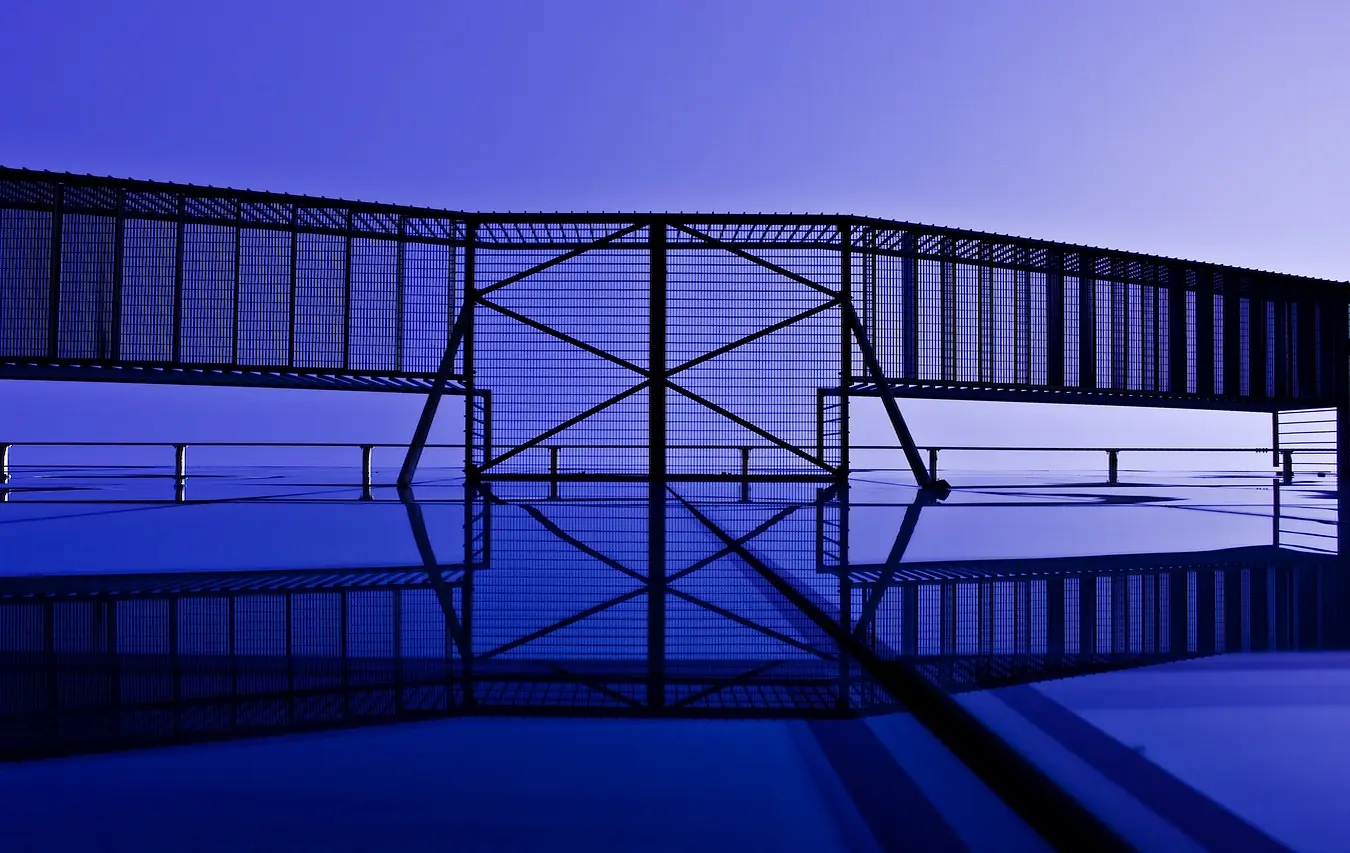Introducing Curvspace Borders
In the realm of design, borders are more than just lines on a map or walls between spaces. They’re dynamic zones of transition, interaction, and transformation. At Curvspace, we’re fascinated by the intricate interplay between different types of borders and their intermediate and threshold designs. Let’s explore this captivating subject and see how it can inspire your next project.
Reader Disclosure
Jump to:
The Spectrum of Borders
Borders come in various forms, each with its unique characteristics and design potential. Understanding these different types can help us create more nuanced and effective spaces.
Physical Borders
Physical borders are the most tangible and obvious type. They include walls, fences, gates, and other physical structures that demarcate space. However, even within this category, there’s a wide range of possibilities:
- Solid Walls: These provide complete visual and physical separation.
- Permeable Barriers: Think of fences or screens that allow visual or auditory connection while maintaining physical separation.
- Movable Partitions: These offer flexibility, allowing spaces to be reconfigured as needed.
At Curvspace, we often see designers playing with these physical borders, creating innovative solutions that challenge traditional notions of separation.
Psychological Border
Less tangible but equally powerful are psychological borders. These are the invisible lines that influence behavior and perception without physical barriers. Examples include:
- Change in flooring material or color
- Shifts in lighting
- Subtle changes in ceiling height
These psychological borders can guide movement, create zones within open spaces, and influence mood without interrupting flow. Curvspace’s gallery often features projects that masterfully employ these subtle cues to shape the user experience.
Natural Borders
Nature provides some of the most beautiful and effective borders. Rivers, mountain ranges, and forests have historically served as boundaries. In design, we can harness natural elements to create borders that feel organic and harmonious:
- Water features
- Plant walls or hedges
- Changes in terrain or elevation
These natural borders not only delineate space but also contribute to biophilic design, connecting users with nature and potentially improving well-being.
The Magic of Intermediate Spaces
Between clearly defined areas lie intermediate spaces – zones of transition that blur the lines between distinct regions. These spaces are crucial in creating a sense of flow and connection.
Transitional Zones
Transitional zones act as buffers between different areas. They can ease the shift between public and private spaces, indoor and outdoor areas, or different functional zones. Examples include:
- Vestibules between exterior and interior
- Hallways connecting rooms
- Covered outdoor areas bridging indoor and outdoor spaces
Curvspace often showcases projects that turn these transitional zones from mere passageways into destinations in their own right, adding value and interest to the overall design.
Liminal Spaces
Liminal spaces exist at the boundary between two defined areas, belonging fully to neither. These in-between spaces can be powerful tools for creating ambiguity, fostering creativity, or providing moments of pause. Consider:
- Mezzanines overlooking larger spaces
- Window seats bridging interior and exterior
- Staircases that double as seating or display areas
The concept of liminality resonates strongly with many Curvspace readers, inspiring designs that challenge conventional spatial definitions.
Threshold Design: Where Borders Meet
Thresholds are the points where we cross from one space to another. They’re not just functional elements but opportunities to create meaningful transitions and experiences.
Physical Thresholds
Physical thresholds are the tangible points of transition. They can be designed to:
- Signal a change in the environment
- Prepare users for what’s to come
- Create a moment of pause or anticipation
Examples include:
- Doorways with unique designs or materials
- Arches or portals
- Steps or level changes
At Curvspace, we’ve seen designers transform simple thresholds into powerful architectural statements, turning the act of entering or exiting into a memorable experience.
Sensory Thresholds
Sensory thresholds engage our senses to mark transitions. They can involve:
- Changes in lighting (brightness, color, or quality)
- Shifts in ambient sound
- Temperature changes
- Variations in air movement
These subtle cues can profoundly affect how we perceive and interact with spaces. Curvspace often features projects that skillfully manipulate these sensory elements to create immersive spatial experiences
Symbolic Thresholds
Symbolic thresholds carry cultural or personal significance. They might not be physical barriers but carry strong associative power. Examples include:
- Traditional torii gates in Japanese architecture
- Red carpets signaling VIP areas
- Digital interfaces acting as gateways to virtual spaces
These symbolic thresholds can add depth and meaning to designs, connecting spaces to broader cultural narratives or personal stories.

Designing with Borders and Thresholds
Now that we’ve explored different types of borders and thresholds, let’s consider how to effectively incorporate them into design.
Layering and Gradation
Instead of abrupt transitions, consider using layers or gradations:
- Create a series of increasingly private spaces
- Use semi-transparent materials to allow partial views
- Gradually change elements like lighting or materials across a space
This approach, often highlighted in Curvspace projects, can create rich, nuanced environments that guide users smoothly through different zones.
Flexibility and adaptability
in our ever-changing world, flexible borders and thresholds are increasingly valuable:
- Use movable partitions to allow space reconfiguration
- Incorporate smart glass that can switch between transparent and opaque
- Design multi-functional threshold spaces that can adapt to different needs
Curvspace readers often find inspiration in designs that allow spaces to evolve and adapt over time.
Blurring the Lines
Sometimes, the most interesting designs come from intentionally blurring borders:
- Create indoor-outdoor spaces that challenge the distinction between interior and exterior
- Design furniture that doubles as spatial dividers
- Use continuous materials across different zones to create visual flow while maintaining functional separation
These approaches can lead to innovative, fluid spaces that challenge conventional notions of boundaries.
The Future of Borders and Thresholds
As we look to the future, several trends are shaping how we think about borders and thresholds:
Digital Integration
With the rise of smart homes and buildings, digital technology is increasingly influencing how we define and interact with spaces:
- Virtual reality and augmented reality creating new types of thresholds
- Smart systems adjusting environmental conditions as users move through spaces
- Digital interfaces acting as gatekeepers to physical or virtual areas
Curvspace is at the forefront of exploring how these digital elements can enhance and redefine our physical environments.
Sustainability and Biophilia
As sustainability becomes increasingly crucial, we’re seeing more designs that:
- Use natural elements as borders and thresholds
- Incorporate living walls or water features as space dividers
- Design thresholds that help manage energy use between different zones
These approaches not only create beautiful, nature-inspired spaces but also contribute to more sustainable built environments.
Cultural Fluidity
In our globalized world, designers are increasingly drawing inspiration from diverse cultural traditions:
- Incorporating elements from different architectural traditions
- Creating spaces that can adapt to various cultural practices
- Designing thresholds that welcome and accommodate diversity
This cultural fluidity, often celebrated in Curvspace features, leads to rich, inclusive designs that resonate across cultural boundaries.
Conclusion
Borders and thresholds are far more than mere functional elements in design. They’re opportunities to create rich, layered experiences that guide, surprise, and delight users. Whether you’re working on an architectural project, interior design, or even digital interfaces, considering the nuances of borders and thresholds can elevate your work to new levels.At Curvspace, we’re continually inspired by designers who push the boundaries of what’s possible, creating innovative solutions that challenge our perceptions of space and transition.
We invite you to explore these concepts in your own work, and to share your insights and creations with our community. After all, it’s through this exchange of ideas that we all grow and evolve as designers. Remember, every border is an opportunity, every threshold a moment of potential. How will you transform these elements in your next design? Let Curvspace be your source of inspiration as you explore the fascinating world of borders, thresholds, and the spaces in between.
Show & Tell
We’d love to hear your thoughts about these ideas! Simply click the link to head over to your favorite platform and add your comments about this post there. We’d like to know about your insights, questions, or just saying hi.
More Curvspace Topic Pages
Disclosure
Our content is reader-supported. This means if you click on some of our links, then we may earn a commission. Commissions do not affect our editor’s opinions or evaluations. Learn more about our editorial process.

About the Editorial Staff
The Curvspace editorial team comprises a diverse group of experts on intermediate and threshold spaces in homes and workplaces. Architects and interior designers, civil engineers and artists, environmental and behavioral psychologists, sociologists and anthropologists. All collaborate to create helpful content, that explores the full potential of these often-overlooked areas to enhance our daily lives.


